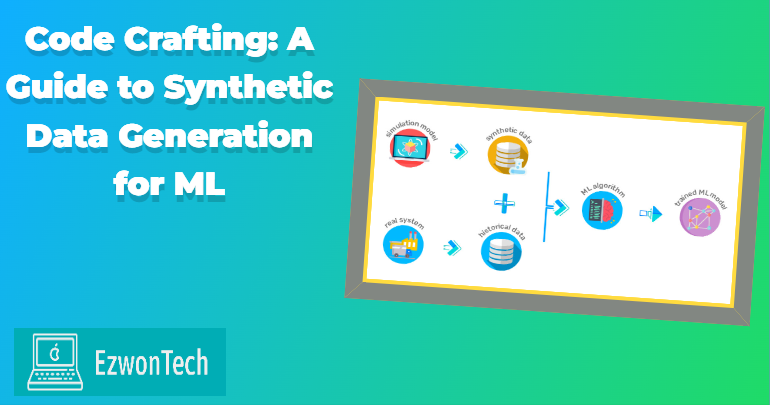Machine learning (ML) models thrive on data, and the quality of the training dataset plays a crucial role in the performance of these models. In many real-world scenarios, obtaining large and diverse datasets can be a challenging task. This is where synthetic data generation comes into play. Synthetic data is artificially created data that mimics the characteristics of real-world data, providing a valuable resource for training and testing machine learning models. In this guide, we will explore the concept of code crafting for synthetic data generation, enabling data scientists and machine learning practitioners to harness the power of artificially generated data.

Understanding Synthetic Data Generation
Synthetic data generation involves creating data points that resemble real-world data without being directly derived from it. This process is particularly useful when access to real data is limited, or when privacy concerns restrict the use of actual data. Code crafting for synthetic data generation allows developers to design algorithms and scripts that simulate the patterns and structures found in authentic datasets.
Advantages of Synthetic Data
- Privacy Preservation: In many cases, real-world data may contain sensitive information. Synthetic data provides a privacy-friendly alternative as it does not contain any personally identifiable information (PII) or sensitive details.
- Data Diversity: Synthetic data allows for the generation of diverse datasets, covering a wide range of scenarios and edge cases. This diversity can enhance the robustness of ML models and improve their performance in real-world applications.
- Data Augmentation: Synthetic data can be used to augment existing datasets, making them larger and more representative. This is particularly beneficial in scenarios where acquiring additional real data is impractical or expensive.
Code Crafting Techniques for Synthetic Data Generation
- Randomization: Introducing randomization in the generation process helps create variations in the synthetic data. This can include random noise, perturbations, or variations in data distribution, making the generated data more representative of real-world scenarios.
- Generative Models: Utilizing generative models, such as Generative Adversarial Networks (GANs) or Variational Autoencoders (VAEs), enables the creation of synthetic data by learning the underlying patterns and structures from real data. These models can generate data points that closely resemble authentic examples.
- Rule-based Generation: Code crafting can involve designing algorithms that follow specific rules to generate synthetic data. For example, if creating synthetic data for a retail dataset, rules can be crafted to simulate purchasing behavior, seasonal trends, or customer preferences.
- Data Transformation and Combination: Applying transformations to existing real data or combining features in novel ways can yield synthetic data that captures the complexity and diversity of real-world scenarios.
Best Practices for Code Crafting in Synthetic Data Generation
- Understand the Domain: A deep understanding of the domain for which synthetic data is being generated is crucial. This knowledge helps in crafting code that produces data with realistic patterns and characteristics.
- Validate Against Real Data: It is essential to validate the synthetic data against real data to ensure that the generated dataset accurately reflects the properties of the actual dataset. This validation helps in identifying any discrepancies and refining the code accordingly.
- Iterative Development: The process of code crafting for synthetic data generation is often iterative. Continuous refinement based on model performance and feedback from validation ensures the generation of high-quality synthetic datasets.
- Documentation: Documenting the code and the synthetic data generation process is crucial for transparency and reproducibility. It aids in understanding the decisions made during code crafting and facilitates collaboration among team members.
Conclusion
Code crafting for synthetic data generation is a powerful technique that empowers machine learning practitioners to overcome challenges related to data availability and privacy. By using carefully designed algorithms and scripts, developers can generate synthetic datasets that closely resemble real-world data, providing a valuable resource for training and testing ML models. As technology advances, the role of synthetic data in machine learning is likely to grow, and mastering the art of code crafting for synthetic data generation will become an invaluable skill for data scientists and AI researchers.